牛津上海版英语六年级下册 Module1 Unit2 At the Airport. Grammar 课件(共21张PPT)
文档属性
| 名称 | 牛津上海版英语六年级下册 Module1 Unit2 At the Airport. Grammar 课件(共21张PPT) |
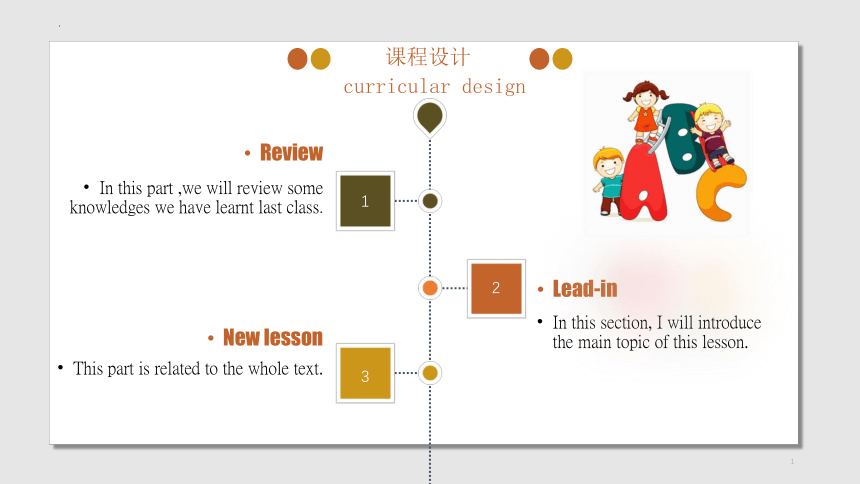
|
|
| 格式 | zip | ||
| 文件大小 | 18.0MB | ||
| 资源类型 | 教案 | ||
| 版本资源 | 牛津上海版(试用本) | ||
| 科目 | 英语 | ||
| 更新时间 | 2022-08-11 16:58:18 | ||
图片预览

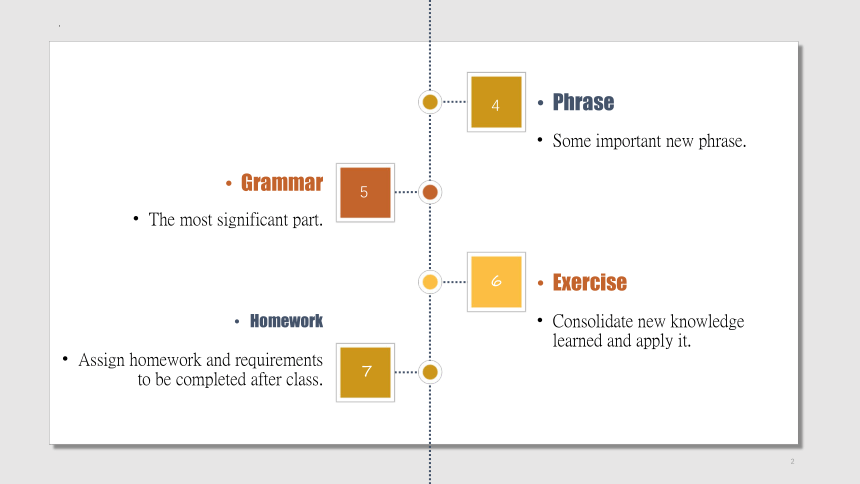

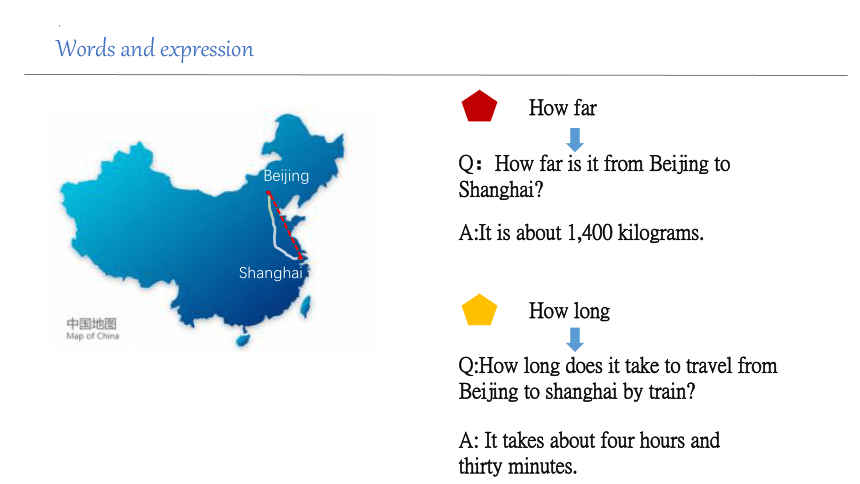
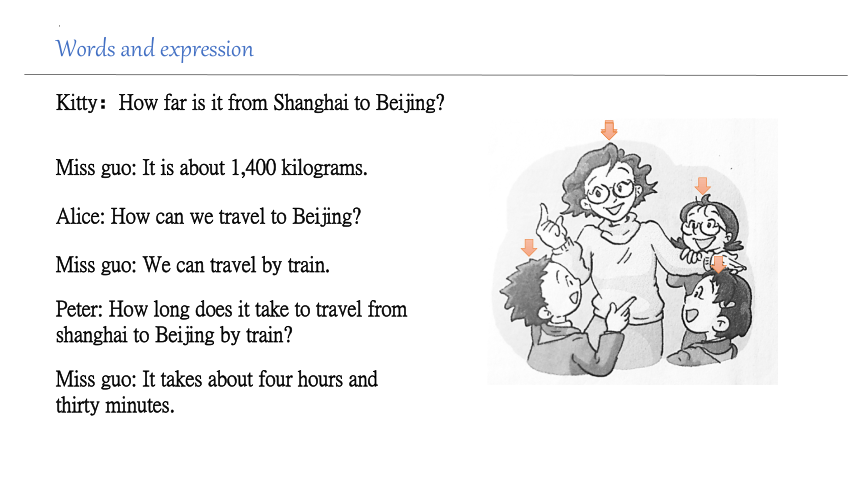
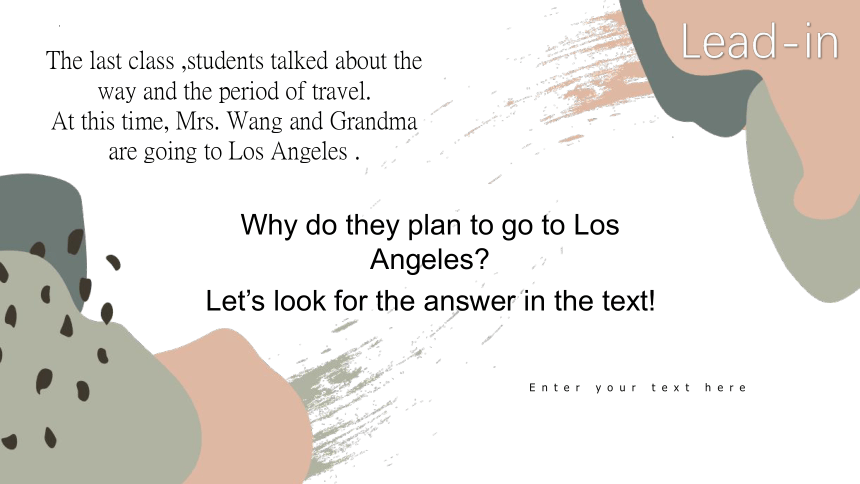
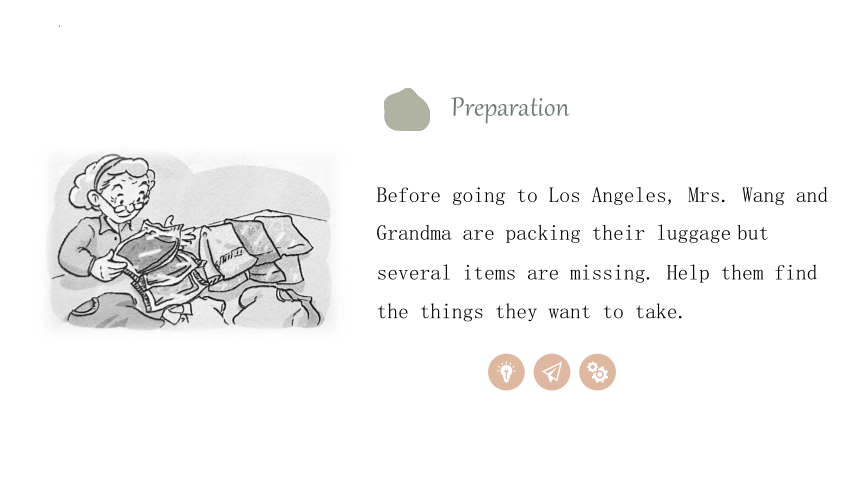


文档简介
(共21张PPT)
1
In this part ,we will review some knowledges we have learnt last class.
Review
In this section, I will introduce the main topic of this lesson.
Lead-in
This part is related to the whole text.
New lesson
课程设计
curricular design
1
2
3
2
The most significant part.
Grammar
Some important new phrase.
Phrase
Assign homework and requirements to be completed after class.
Homework
7
6
Consolidate new knowledge learned and apply it.
Exercise
4
5
Words and expression
How far
How long
By train
It takes about (+time)
/ship
/plane
地点A
地点B
路程
时间
如何正确使用呢?
Beijing
Shanghai
Q:How far is it from Beijing to Shanghai
A:It is about 1,400 kilograms.
Words and expression
How far
How long
Q:How long does it take to travel from Beijing to shanghai by train
A: It takes about four hours and thirty minutes.
Beijing
Shanghai
Kitty:How far is it from Shanghai to Beijing
Miss guo: It is about 1,400 kilograms.
Words and expression
Peter: How long does it take to travel from shanghai to Beijing by train
Miss guo: It takes about four hours and thirty minutes.
Alice: How can we travel to Beijing
Miss guo: We can travel by train.
Enter your text here
The last class ,students talked about the way and the period of travel.
At this time, Mrs. Wang and Grandma are going to Los Angeles .
Why do they plan to go to Los Angeles
Let’s look for the answer in the text!
Lead-in
Preparation
Before going to Los Angeles, Mrs. Wang and Grandma are packing their luggage but several items are missing. Help them find the things they want to take.
Look and learn
A silk scarf
A plane ticket
A passport
With your help, Mrs. Wang and Grandma finish packing.
Mrs. Wang and Grandma are going to Los Angeles, the USA, this Sunday to see Aunt Judy and Uncle Mike. Aunt Judy and Uncle Mike have lived in Los Angeles for six years. Mrs. Wang and Grandma have not been to the USA before. They plan to stay there for two weeks. They have already done a lot of things. They have bought their plane tickets. Grandma has bought Aunt Judy plenty of T-shirts and several silk scarves
Look and read
Mrs. Wang and Grandma are going to Los Angeles, the USA, this Sunday to see Aunt Judy and Uncle Mike. Aunt Judy and Uncle Mike have lived in Los Angeles for six years. Mrs. Wang and Grandma have not been to the USA before. They plan to stay there for two weeks. They have already done a lot of things. They have bought their plane tickets. Grandma has bought Aunt Judy plenty of T-shirts and several silk scarves
Look and read
Q:Why do they plan to go to Los Angeles
A:Because Mrs. Wang and Grandma haven’t seen them for six years and they want to see Aunt Judy and Uncle .
Grammar:
现在完成时
现在完成时(The Present Perfect Tense)是过去的动作或状态持续到现在并且已经完成,对现在造成的影响,可能持续发生下去。它的构成是:主语+助动词(have/has)+动词的过去分词(done)。
即S + have /has +done
Past
Now
Future
S + have /has +done
Past
Now
Future
Grammar:
现在完成时
S + have /has +done
Past
Now
Future
Past
Now
Future
S + did
Grammar:
现在完成时
S + have /has +done
Past
Now
Future
Past
Now
Future
S + did
Grammar:
现在完成时
一般过去式:表示过去某个时间里发生的动作或状态
S + have /has +done
Past
Now
Future
Past
Now
Future
S + did
Grammar:
现在完成时
最大的不同点在于:现在完成时是过去某个时间点到现在某个时间点的时间段;
而过去时的动作发生在过去,是一个时间点
Comparison
Mr. Wang has worked in the factory.
王先生一直在这家工厂工作
Mr. Wang worked in the factory.
王先生之前在这家工厂工作(说明现在不在这家工厂工作)
I have not washed my clothes yet.
我还没有洗衣服(直到我说完话的这一刻我都没洗)
I did not wash my clothes .
我之前没有洗衣服。(但是我现在有没有洗完衣服是未知的)
现在完成时
I've already read this book.
I read this book.
过去时
(“读”这一动作发生在过去,对现在造成的影响是“知道书中的内容”。)
我过去读了这本书(不强调对现在的影响)
Exercise
1
I __________there yet.
A. have not been
B. have not gone
C. did ’t go
D. am not going
Exercise
1
I __________there yet.
A. have not been
B. have not gone
C. did ’t go
D. am not going
have been
去过
have gone
去了
Exercise
have been
去过
have gone
去了
E.g. I have been to Beijing(去过北京,现在已经回来了)
E.g. I have gone to Beijing.(去了北京,现在还没有回来)
Exercise
2
常与时间副词already(已经) ,yet(还、已经) ,just(刚刚、仅仅) 等连用
1.already意为“已经”,通常用于肯定句中,可放在助动词之后,过去分词之前,也可以放在句末。
E.g. : I ______ ______(finish) my work.
2.yet用在疑问句中意为“已经”,用在否定句中意为“还”,常放在句末。
E.g. : The woman __________ (not find) her dog .
3. just意为“刚刚”,表示行为刚刚过去,常放在助动词与过去分词之间。
E.g. : He ______ ____(come) back from school .
already
yet
just
have
finished
hasn’t found
has
come
动词变化
规则动词:
1直接在原型基础上加ed
e.g. played , watched ,helped
2.以不发音的-e结尾的动词,动词词尾+d
e.g. hoped, raised , wiped
3.以辅音字母+y结尾的动词,把y变成 i再加ed
e.g. studied , tried, copied
不规则动词:
1.buy-bought- bought
2.go-went- gone
3.make-made- made
4.get-got- got
5.do-did- done
6.fly-flew- flew
e.g. come-came-come
不规则动词的变化规律不强,要多加记忆哦!
1
In this part ,we will review some knowledges we have learnt last class.
Review
In this section, I will introduce the main topic of this lesson.
Lead-in
This part is related to the whole text.
New lesson
课程设计
curricular design
1
2
3
2
The most significant part.
Grammar
Some important new phrase.
Phrase
Assign homework and requirements to be completed after class.
Homework
7
6
Consolidate new knowledge learned and apply it.
Exercise
4
5
Words and expression
How far
How long
By train
It takes about (+time)
/ship
/plane
地点A
地点B
路程
时间
如何正确使用呢?
Beijing
Shanghai
Q:How far is it from Beijing to Shanghai
A:It is about 1,400 kilograms.
Words and expression
How far
How long
Q:How long does it take to travel from Beijing to shanghai by train
A: It takes about four hours and thirty minutes.
Beijing
Shanghai
Kitty:How far is it from Shanghai to Beijing
Miss guo: It is about 1,400 kilograms.
Words and expression
Peter: How long does it take to travel from shanghai to Beijing by train
Miss guo: It takes about four hours and thirty minutes.
Alice: How can we travel to Beijing
Miss guo: We can travel by train.
Enter your text here
The last class ,students talked about the way and the period of travel.
At this time, Mrs. Wang and Grandma are going to Los Angeles .
Why do they plan to go to Los Angeles
Let’s look for the answer in the text!
Lead-in
Preparation
Before going to Los Angeles, Mrs. Wang and Grandma are packing their luggage but several items are missing. Help them find the things they want to take.
Look and learn
A silk scarf
A plane ticket
A passport
With your help, Mrs. Wang and Grandma finish packing.
Mrs. Wang and Grandma are going to Los Angeles, the USA, this Sunday to see Aunt Judy and Uncle Mike. Aunt Judy and Uncle Mike have lived in Los Angeles for six years. Mrs. Wang and Grandma have not been to the USA before. They plan to stay there for two weeks. They have already done a lot of things. They have bought their plane tickets. Grandma has bought Aunt Judy plenty of T-shirts and several silk scarves
Look and read
Mrs. Wang and Grandma are going to Los Angeles, the USA, this Sunday to see Aunt Judy and Uncle Mike. Aunt Judy and Uncle Mike have lived in Los Angeles for six years. Mrs. Wang and Grandma have not been to the USA before. They plan to stay there for two weeks. They have already done a lot of things. They have bought their plane tickets. Grandma has bought Aunt Judy plenty of T-shirts and several silk scarves
Look and read
Q:Why do they plan to go to Los Angeles
A:Because Mrs. Wang and Grandma haven’t seen them for six years and they want to see Aunt Judy and Uncle .
Grammar:
现在完成时
现在完成时(The Present Perfect Tense)是过去的动作或状态持续到现在并且已经完成,对现在造成的影响,可能持续发生下去。它的构成是:主语+助动词(have/has)+动词的过去分词(done)。
即S + have /has +done
Past
Now
Future
S + have /has +done
Past
Now
Future
Grammar:
现在完成时
S + have /has +done
Past
Now
Future
Past
Now
Future
S + did
Grammar:
现在完成时
S + have /has +done
Past
Now
Future
Past
Now
Future
S + did
Grammar:
现在完成时
一般过去式:表示过去某个时间里发生的动作或状态
S + have /has +done
Past
Now
Future
Past
Now
Future
S + did
Grammar:
现在完成时
最大的不同点在于:现在完成时是过去某个时间点到现在某个时间点的时间段;
而过去时的动作发生在过去,是一个时间点
Comparison
Mr. Wang has worked in the factory.
王先生一直在这家工厂工作
Mr. Wang worked in the factory.
王先生之前在这家工厂工作(说明现在不在这家工厂工作)
I have not washed my clothes yet.
我还没有洗衣服(直到我说完话的这一刻我都没洗)
I did not wash my clothes .
我之前没有洗衣服。(但是我现在有没有洗完衣服是未知的)
现在完成时
I've already read this book.
I read this book.
过去时
(“读”这一动作发生在过去,对现在造成的影响是“知道书中的内容”。)
我过去读了这本书(不强调对现在的影响)
Exercise
1
I __________there yet.
A. have not been
B. have not gone
C. did ’t go
D. am not going
Exercise
1
I __________there yet.
A. have not been
B. have not gone
C. did ’t go
D. am not going
have been
去过
have gone
去了
Exercise
have been
去过
have gone
去了
E.g. I have been to Beijing(去过北京,现在已经回来了)
E.g. I have gone to Beijing.(去了北京,现在还没有回来)
Exercise
2
常与时间副词already(已经) ,yet(还、已经) ,just(刚刚、仅仅) 等连用
1.already意为“已经”,通常用于肯定句中,可放在助动词之后,过去分词之前,也可以放在句末。
E.g. : I ______ ______(finish) my work.
2.yet用在疑问句中意为“已经”,用在否定句中意为“还”,常放在句末。
E.g. : The woman __________ (not find) her dog .
3. just意为“刚刚”,表示行为刚刚过去,常放在助动词与过去分词之间。
E.g. : He ______ ____(come) back from school .
already
yet
just
have
finished
hasn’t found
has
come
动词变化
规则动词:
1直接在原型基础上加ed
e.g. played , watched ,helped
2.以不发音的-e结尾的动词,动词词尾+d
e.g. hoped, raised , wiped
3.以辅音字母+y结尾的动词,把y变成 i再加ed
e.g. studied , tried, copied
不规则动词:
1.buy-bought- bought
2.go-went- gone
3.make-made- made
4.get-got- got
5.do-did- done
6.fly-flew- flew
e.g. come-came-come
不规则动词的变化规律不强,要多加记忆哦!
同课章节目录
- Module 1 City life
- Unit 1 Great cities in Asia
- Unit 2 At the airport
- Unit 3 Dragon Boat Festival
- Unit 4 Staying healthy
- Module 2 Changes
- Unit 5 What will I be like?
- Unit 6 Seasonal changes
- Unit 7 Travelling in Garden City
- Module 3 The nature world
- Unit 8 Windy weathe
- Unit 9 Sea water and rain wate
- Unit 10 Forests and land
- Unit 11 Controlling fire
